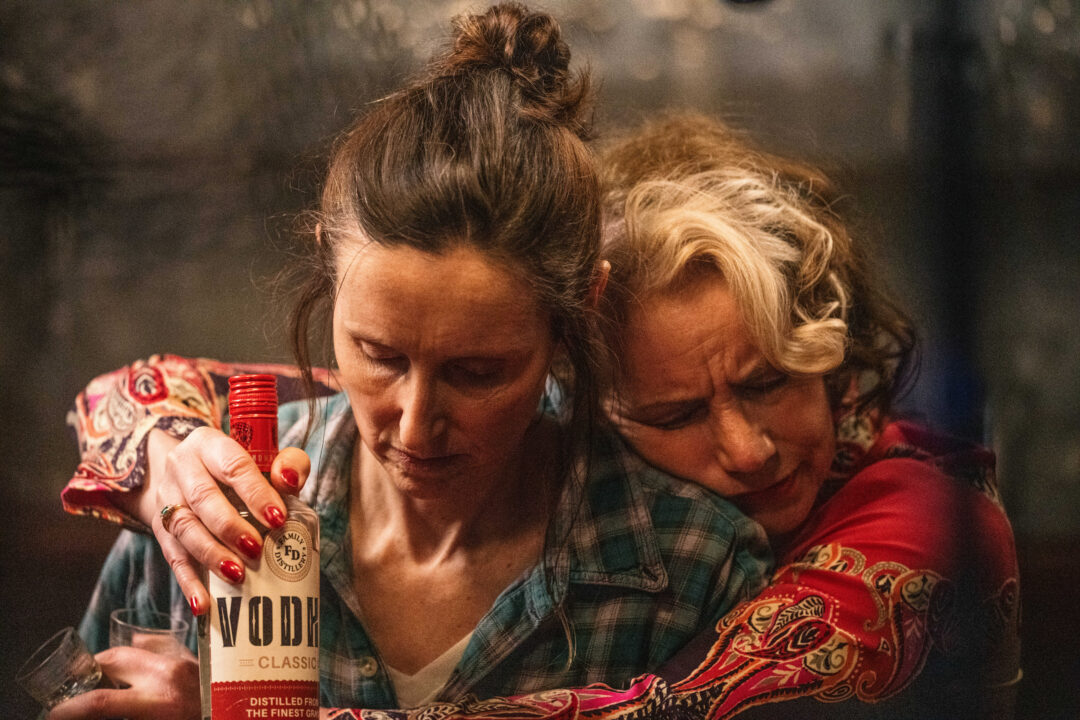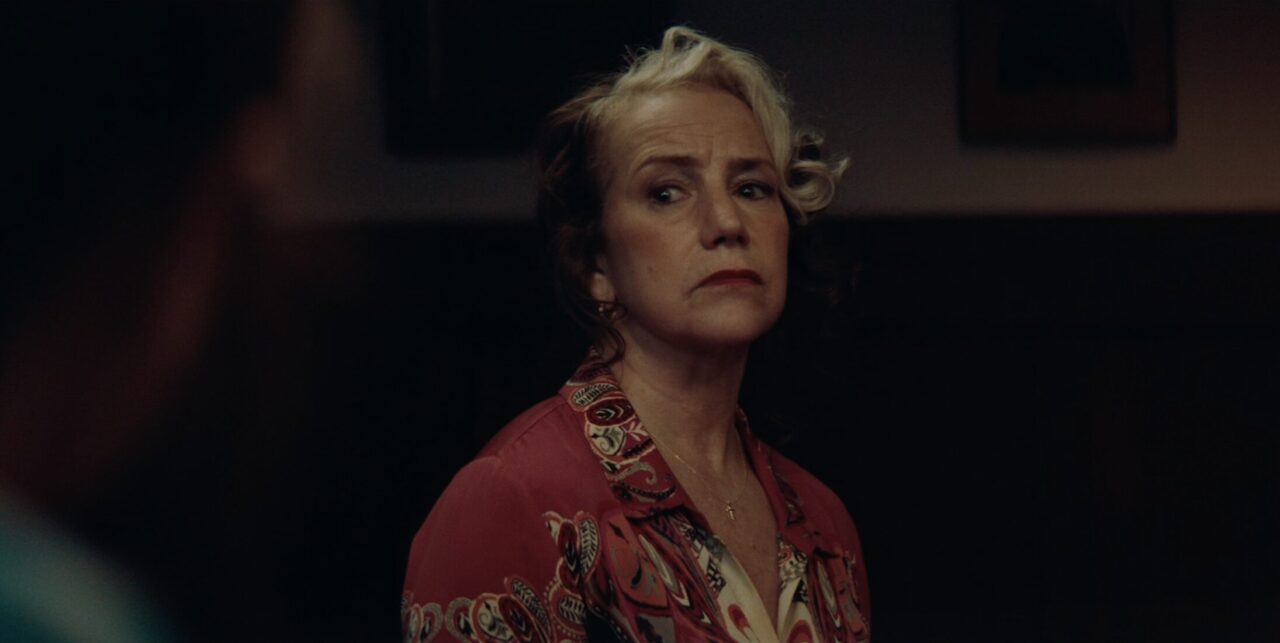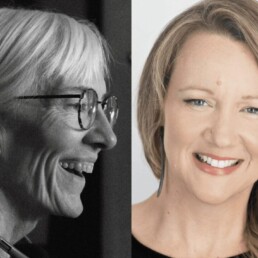Addiction is a deeply complex issue, and it becomes even more challenging when a loved one is affected. Director Amanda Deering Jones and screenwriter Kitty Edwinson approach this sensitive topic with compassion in their short film Little Mother Lies, inviting audiences to engage with the realities of addiction more empathetically.
In the film, Amanda Deering Jones and Kitty Edwinson explore the intricacies of bringing emotionally charged scenes to life, aiming to foster a more nuanced understanding of recovery. Jones and Edwinson express, “If even one person leaves with a shifted perspective on their situation, we will consider it a success.” Read on for our exclusive interview.
It’s a pleasure to meet you both, Amanda and Kitty! I’d love to hear how you first became involved with your new short film, Little Mother Lies. Kitty, being the screenwriter, when did this story’s idea first come to you? Amanda, when did you become involved with this project as the director?
Kitty Edwinson: Hi Ryan, it’s a pleasure to meet you! The idea for this short came from the feature on which it’s based, Mother Lies. I found a letter my grandmother had written in 1955 to her sister’s psychiatrist describing what the sisters endured as children when they fled Russia during the 1917 Revolution. My mother did not know this story. I showed the letter to my sister and said, “There’s a movie in here.”
Amanda Deering Jones: Thank you for talking with us! As a producer, I have been with the feature since 2020. However, at the end of 2022, we discussed creating a short as a proof-of-concept. At the same time, I had personal revelations about wanting to enter the directing seat in my career. The stars aligned, and I was able to dive in with this short.
What were each of you most excited to bring to the screen, and how did you approach these sensitive subjects?
KE: This story gave me a chance to portray the fallout of a horrific choice parents of addicted children often face and then play with what might happen if the son, in this case, caught even a tiny inkling of what that fallout was, how it was shaping the decision he’s making in this very moment.
We approached this by gradually revealing the extremity of the situation to the audience and then having the son and audience learn what the choice was at the same time. This way, the audience’s reaction would be compounded by caring how the son responds.

ADJ: Two things excited me from the feature that Kitty crafted. I wanted the world to meet these complex sisters. I always thought their dynamic was fascinating as well as deeply relatable. And I wanted to show a mother willing to face her darkest fears to save her son. Much thought and care was put into the story around what we wanted to highlight, poke at, and elevate in the world of addiction.
The same goes for the pitch material when we approached investors. Kitty did a beautiful job sculpting the dialogue around what was said and what wasn’t said. We only moved forward once we all felt the script was truly ready.
Kitty, what did you want to highlight when writing the roles of sisters Dorie, Marinka, and her son?
KE: I wanted Dorie to embody the fear, worry, and exhaustion of a parent in this situation, layered over with tension and ambivalence around being with her sister. Pascale Roger-McKeever did this brilliantly. I wanted Marinka, her sister, to be this mesmerizing force of nature who embodies the allure of the family’s particular approach to life while also dramatizing the destructive core of that same approach–Emilie Talbot did this brilliantly.

I wrote the son to be in the throes of heroin withdrawals, a state he’s familiar with while being in a situation that is literally foreign, suffering in this weird room. Elliott Thomas West perfectly captured the son’s curiosity, rising and falling with the waves of sickness and his primal need to escape while also being a beloved son who has not been lost.
Amanda, what was your process for casting these characters? Did you have specific actors in mind?
ADJ: We had actors in mind for the feature, but the short was a different beast. We brought on a brilliant local SF Bay Area casting director, Kim Donovan, and decided to look for local actors first. We lucked out for both of the sisters. Pascale Roger-McKeever and Emilie Talbot sparked us immediately. Elliott West from LA also quickly rose to the top as a standout.
Amanda, how did you approach directing actors in such emotionally charged scenes?
ADJ: Time is often more squeezed with a short, but I met with each of them individually because I wanted us to get to know each other as people first. I wanted to hear more about their process and how their brains work. This was supremely valuable going into the shoot.

I knew these would be tough roles, but I wanted them to feel they could lean on me for emotional support and to feel safe throughout the entire process. This preparation served us all as we navigated the hardest scenes, and in the end, they blew me away.
What were some of your biggest challenges in making Little Mother Lies as an indie film?
KE: My confidence flagged sometimes. On days when we hit some bump, I’d feel certain that the project would never come together, much less be superb. I had to work on restoring my faith. I was also worried about funding, which came together after all, but boy, that was a nail-biter.
ADJ: Kitty said it: Fundraising is high on that list. We approached investors and utilized crowd-funding. The great news is we got there, but it was a lot of work and a rollercoaster. Looking back, I realize that so much felt deeply hard while we were in it. Still, I am also blown away at the number of things that fell into place to support this project, particularly the incredibly talented people we pulled together.
Can you discuss your collaboration with the crew and how you brought everyone’s ideas together to shape the final product?
KE: We have been a tight bunch since the idea’s inception for a short. We gradually honed our goals over the time the script was finalized so that by the time we had to shoot, Amanda could be the shepherd, as she says, and everything zipped together. The communicativeness and focus with the crew were a delight to experience.

ADJ: I care deeply about each person feeling they can contribute. You do this by declaring it from the start with your team and how you respond when they offer a thought or note. You will not take every idea, but if you’ve done your homework as a director, you will know what to take and what not to take. When I didn’t take a note, I at least acknowledged it and often explained my reasoning. Yes, this can be more work, but it creates a dialogue and builds trust. If we had not set this tone intentionally, we would have missed out on gold, and the short would have suffered.
Amanda, did you employ specific filming techniques or styles that were particularly effective for this story?
ADJ: In my research, I found an image from another film that I knew was the exact tone I was aiming for, and it became my guiding light. It utilized an anamorphic lens, and that cinematic feel was vital to convey a bit of mystery, a deep focus on the subjects, exposing their vulnerability, with a touch of absurdity and chaos at times.
Then, lighting was essential to bringing in all the conflicting tones; a warm background meant to tell us that there was love amongst the chaos, but blue lighting reflected the current state of the relationships. The opening scene has the sisters mostly isolated in shots, demonstrating how disconnected they are, but with a few wide two-shots for moments of connection. We were fortunate to utilize 2 Alexa Mini cameras for those isolated shots, allowing seamless filming where we could capture full performances with fewer takes.
What do you hope audiences take away from Little Mother Lies? Have you received any feedback that particularly resonated with you?
KE: People in recovery are all around us, and people struggling with addicted loved ones or addiction themselves are, too. Before we began shooting, crew members conveyed to me how important it was to them that this story be told. It has already generated critical conversations. This means everything to me.
I want the audience to come away with a deepened understanding of what being in this situation might be like from each perspective: parent, sibling, addicted loved one. I want them to soften or suspend judgment. If they do know something about addiction, I want them to gain the courage to have a different kind of conversation with people who matter to them (including themselves).

ADJ: Most feedback has been powerful and moving because it resonates. Like Kitty said, it’s sparked meaningful conversations at times. Each person’s interpretation of the ending is unique, but they’ve certainly felt its weight with each viewing. I hope it creates more understanding for families struggling with addiction. If just one person walks away with a perspective shift on their situation, we will have won.
Do you have plans for future projects after Little Mother Lies? Will they explore similar themes or different ones?
KE: The feature Mother Lies is about the sisters within the richly textured, disappearing community of descendants of Russian exiles in San Francisco. Addiction is just one thread weaving throughout. So we want this film made. I am completing another screenplay set in San Francisco in 1976, based on the true adventures of a rock-concert-crazed teen at the Cow Palace.

